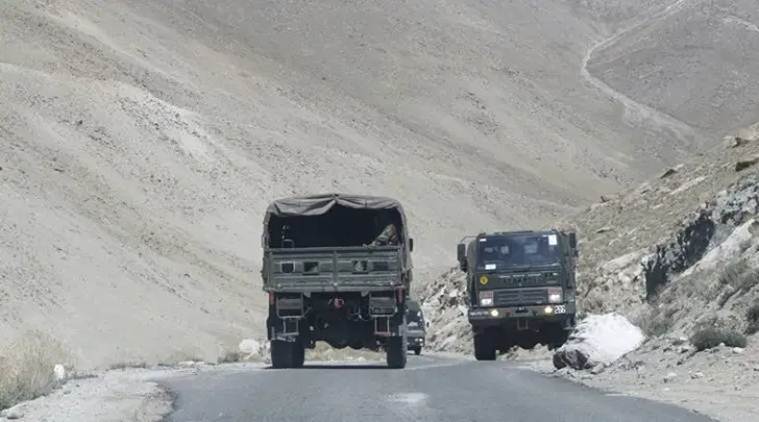
SOURCE: ENS
THE FIFTH round of Corps Commander-level military talks failed to break the deadlock in the 14-week border crisis in eastern Ladakh after India rejected Chinese demands for further disengagement on the Line of Actual Control (LAC) as “untenable”, official sources told The Indian Express. Two days after the talks were held, the high-powered China Study Group (CSG) reviewed the Chinese proposal Tuesday and asked the Army to convey that the proposal of “mutual and equal” disengagement at Pangong was “not acceptable” to India.
The message was delivered by the Army on a dedicated military hotline in Ladakh, sources said. The next step will be decided after a formal Chinese response is received and deliberations are held within the government, they said. The Army, meanwhile, had been asked to continue preparations for a long haul on the LAC, including winter deployment for nearly 35,000 additional troops.
“The focus of the latest round of talks was on the Pangong lake area but the Chinese side refused to undertake any further disengagement unless Indian soldiers also step back by an equal distance. That is untenable as it would mean forsaking our longstanding historic posts on the bank and de facto accepting the Chinese version of the LAC in the area. It was conveyed to the Chinese that status quo ante remains our aim and their proposal was not acceptable,” sources said.
Sunday’s meeting started around 11 am and lasted for about 10 hours in Moldo, on the Chinese side. However, unlike the previous four rounds, neither the Army nor the External Affairs Ministry issued a statement later. A senior officer in the security establishment said there is a possibility of diplomatic talks or discussions being held at the level of Special Representatives to break the logjam.
According to sources, the disengagement process followed so far — on PP14, PP15, PP17 and PP17A — was based on the principle of “mutual and equal” stepping back from friction points.
The Chinese forces, sources said, had stepped back from Finger 4 on the northern bank of the lake towards Finger 5, even as the Indian side agreed to step back by an equal distance towards its post near Finger 2. “But any further stepping back would mean vacating the Indian posts in the area and that was untenable,” sources said.
The Chinese side has also not stepped back from the ridgeline on the northern bank, where it continues to be deployed at Finger 4, which is one of the eight spurs jutting out. According to India, the LAC passes through Finger 8. And since May, Chinese forces have come in eight km to the east of Finger 8 and strengthened their deployment in the area in the past three weeks.
Sources said that at PP17 and PP17A in the Gogra-Hot Springs area, the Chinese side had not followed the disengagement process, leaving soldiers from both sides separated by one kilometre. Because of the Chinese stance, sources said, the possibility of further progress at these two points remains slim.
During Sunday’s meeting, sources said, India also raised the issue of Depsang plains where its patrols have been blocked from accessing five points — 10, 11, 11A, 12 and 13. The Chinese side has been blocking Indian soldiers at a site called “Y-junction” or “Bottleneck” in the area, 18 km inside the LAC. This, however, is not linked to the current crisis.
With heavy deployment on both sides, Depsang is the most strategically important of all the friction points because of its flat terrain and proximity to the strategic DSDBO road and Daulat Beg Oldie airstrip near the Karakoram Pass.






